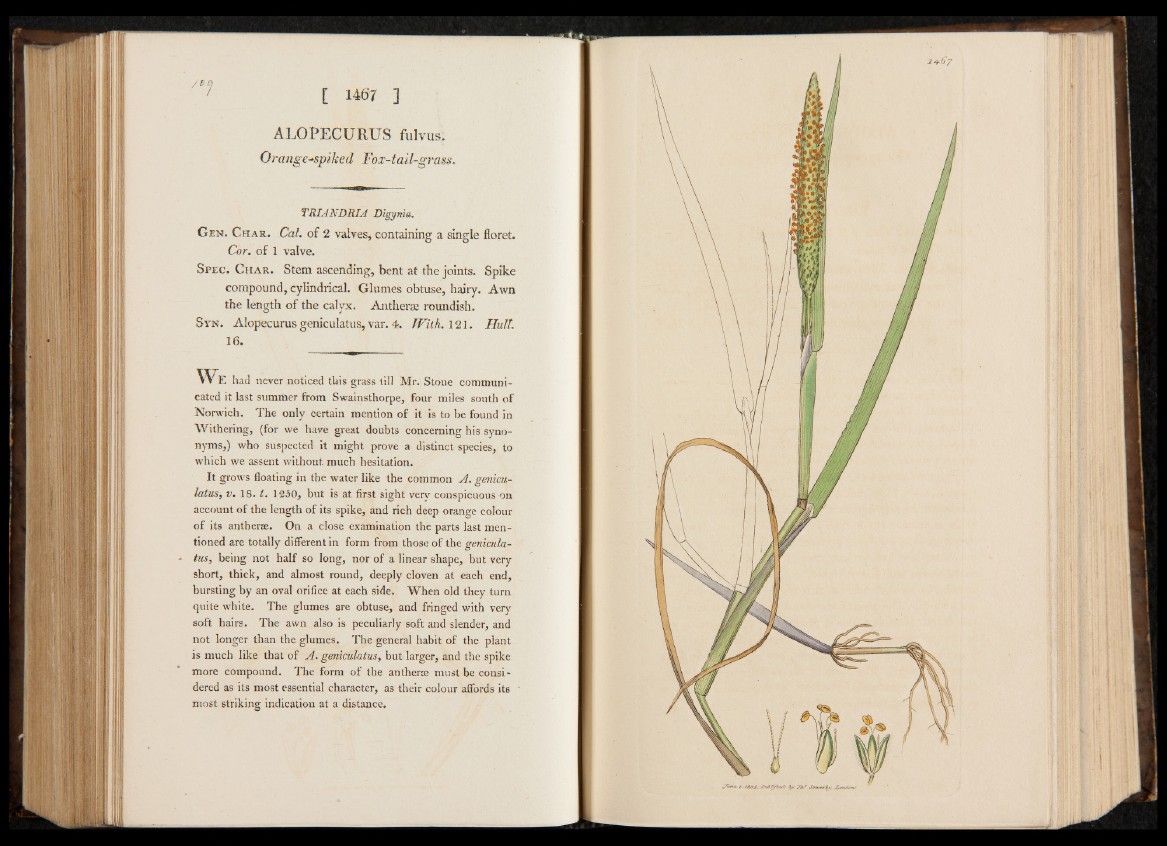
ALOPECURUS fulvus.
Orange-spiked Tox-tail-grass.
TRIANDRIA Digynia.
G en. Char. Cal. of 2 valves, containing a single floret.
Cor. of 1 valve.
Spec. Char. Stem ascending, bent at the joints. Spike
compound, cylindrical. Glumes obtuse, hairy. Awn
the length o f the calyx. Anthers roundish.
Syn. Alopecurus geniculatus, var. 4. With. 121. Hull.
16.
W e had never noticed this grass till Mr. Stone communicated
it last summer from Swainsthorpe, four miles south of
Norwich. The only Certain mention of it is to be found in
Withering, (for we have great doubts concerning his synonyms,)
who suspected it might prove a distinct species, to
which we assent without much hesitation.
It grows floating in the water like the common A . geniculatus,
v. 18. t. 1250, but is at first sight very conspicuous on
account of the length of its spike, and rich deep orange colour
o f its antherae. On a close examination the parts last mentioned
are totally different in form from those of the geniculatus,
being not half so long, nor of a linear shape, but very
short, thick, and almost round, deeply cloven at each end,
bursting by an oval orifice at each side. When old they turn
quite white. The glumes are obtuse, and fringed with very
soft hairs. The awn also is peculiarly soft and slender, and
not longer than the glumes. The general habit of the plant
is much like that of A . geniculatus, but larger, and the spike
more compound. The form of the antherse must be considered
as its most essential character, as their colour affords its
most striking indication at a distance.